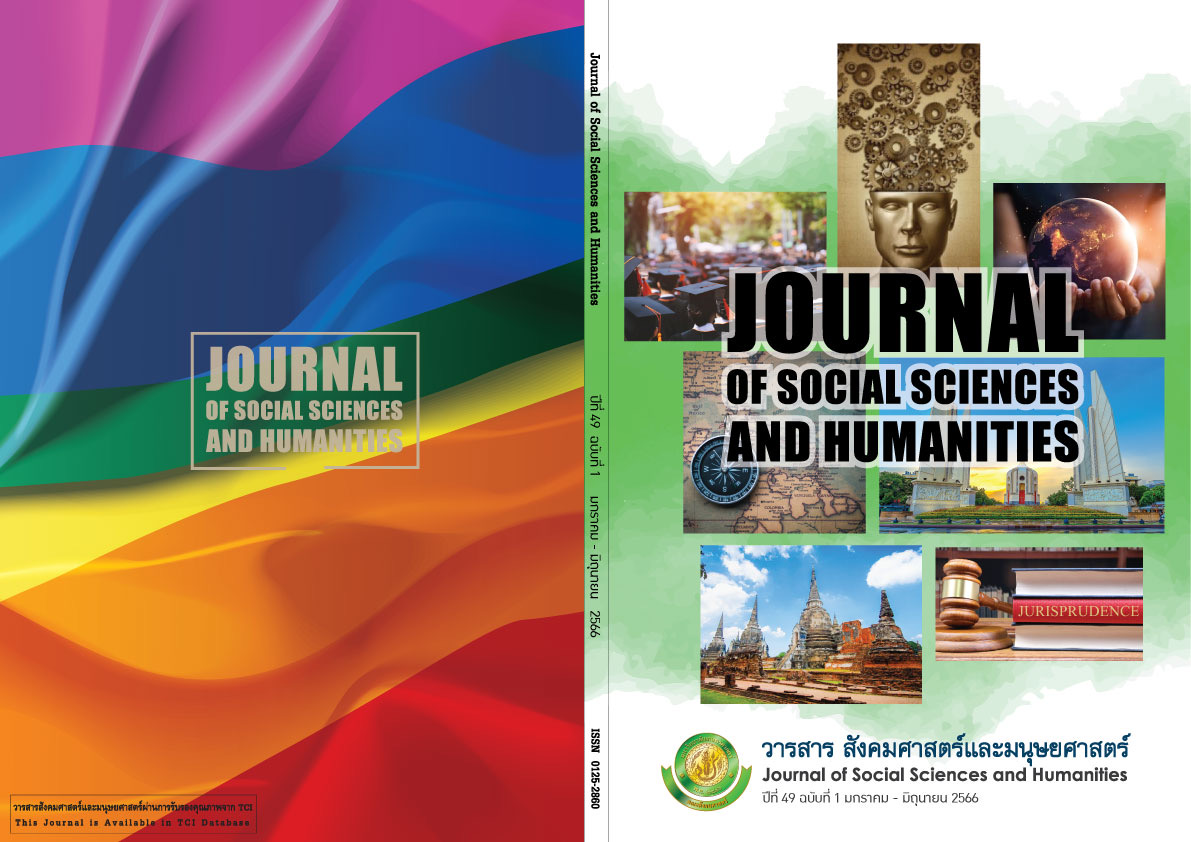อัตลักษณ์แห่งชาติของไต้หวันกับความสัมพันธ์ข้ามช่องแคบ
Main Article Content
บทคัดย่อ
บทความวิจัยนี้มุ่งศึกษาการเกิด การพัฒนาและการเปลี่ยนแปลงอัตลักษณ์แห่งชาติของไต้หวันที่ดำรงควบคู่ไปกับความสัมพันธ์ข้ามช่องแคบ โดยใช้ระเบียบวิธีวิจัยเชิงคุณภาพผ่านเอกสารทุติยภูมิในการวิเคราะห์ถึงอัตลักษณ์และผลประโยชน์ของไต้หวัน และปัจจัยที่มีอิทธิพลต่อการสร้างอัตลักษณ์และผลประโยชน์ของไต้หวันซึ่งมีผลต่อความสัมพันธ์ระหว่างประเทศของไต้หวันและจีน เพื่อศึกษาความเกี่ยวเนื่องของอัตลักษณ์แห่งชาติของไต้หวันกับความสัมพันธ์ข้ามช่องแคบ และการขับเคลื่อนการพัฒนาอัตลักษณ์แห่งชาติของไต้หวันกับความสัมพันธ์ข้ามช่องแคบ
ผลการวิจัยพบว่าท่าทีและสถานการณ์ความสัมพันธ์ข้ามช่องแคบ ตลอดจนหลักการทางกฎหมายและสนธิสัญญาตั้งแต่อดีตจนถึงปัจจุบันระหว่างไต้หวัน-จีนก่อให้เกิดสำนึก การพัฒนา และการเปลี่ยนแปลงอัตลักษณ์ของไต้หวันเพิ่มมากขึ้นซึ่งขับเคลื่อนทั้งโดยภาครัฐและภาคประชาชน จนอนาคตทางการเมืองและผู้ปกครองของไต้หวันถูกผูกโยงไปกับการพัฒนาอัตลักษณ์ทางการเมืองกับความสัมพันธ์ข้ามช่องแคบ การพัฒนาอัตลักษณ์ของไต้หวันได้นำมาซึ่งสำนึกในความเป็นไต้หวันและแบ่งแยกจากจีน แต่ไต้หวันก็ยังไม่อาจไปสู่อิสรภาพอย่างเต็มที่ ขณะเดียวกันการพัฒนาอัตลักษณ์ของไต้หวันก่อให้เกิดความไม่แน่นอนต่ออนาคตความสัมพันธ์กับจีนอีกด้วย
Article Details

อนุญาตภายใต้เงื่อนไข Creative Commons Attribution-NonCommercial-NoDerivatives 4.0 International License.
เอกสารอ้างอิง
พิพิรญาณ์ แสงปัญญา. (2561). นโยบายมุ่งใต้ใหม่: Soft Power ของไต้หวัน. วารสารโพธิวิจัย, 2(1), 73-99.
วรอนงค์ โกวิทเสถียรชัย.(2012). อัตลักษณ์ไต้หวันในยุคโลกาภิวัตน์. วารสารสำนักบัณฑิตอาสาสมัคร, 9(2),134-159.
Bo, Z. (2002). Cross-Strait Relations at the Turn of the Century: Divergence and Confrontation
-2002.Chinese Law & Government, 35(5), 3-17.
Brown, M. (2004). Is Taiwan Chinese? The Impact of Culture, Power, and Migration on Changing Identities. University of California Press.
Bush, R. (2021). Taiwan’s democracy and the China challenge. https://www.brookings.edu/wpcontent/uploads/2018/12/FP_20190226_taiwan_bush _hass .pdf.
Corcuff, S. (2002). The February 28 Incident and National Identity. In Memories of the Future: National Identity Issues and the Search for a New Taiwan. 22-27. Routledge.
Koopman, K. (2016). Taiwan’s Path to Independence: Resolving the “One China” Dispute. Journal of Conflict Resolution, 18(1), 221-248.
Gottlieb, D. (2017). Politics, China, and Taiwan’s Youth Identity. https://ketagalanmedia.com/2017/10/31/politics-china-taiwans-youth-identity/.
Lee, T. (1999). Understanding Taiwan: Bridging the Perception Gap. Foreign Affairs,78(6), 9-14.
Li, Y. (2013). Constructing Peace in the Taiwan Strait: a constructivist analysis of the changing dynamics of identities and nationalisms. Contemporary China, 23 (85), 119-142.
Lin, D. (2022). “One China” and the Cross-Taiwan Strait Commitment Problem. Journal of
The China Quarterly, 1-23.
Lynch, D. (2004). Taiwan’s self-conscious nation-building project. Asian Survey,44(4), 513-533.
Matsuda, Y. (2015). Cross-Strait Relations under the Ma Ying-jeou administration: From Economic to Political Dependence. Contemporary East Asia Studies,4(2), 3-35.
Qi, D. (2012). Divergent Popular Support for the DDP and the Taiwan Independence Movement,
-2012. Journal of Contemporary China, 21(78), 973-991.
Rigger, S.(2003). Disaggregating the Concept of National Identity. Asia Program Special Report, 114, 17-21.
Tsai, C. (2007). National Identity, Ethnic Identity, and Party Identity in Taiwan. Maryland Series in Contemporary Asian Studies, 188, 1-33.
Wang, V. (2017). Reconciliation without Convergence? China-Taiwan Relations in Comparative and Theoretical Perspectives. Paper for delivery at the ISA International Conference. 1-33.
Wei, C. & Lai, C. (2017). Identities, Rationality and Taiwan’s China Policy: The Dynamics of Cross-Strait Exchanges. Asian Studies Review, 41(1),136-154.
Shen.S.(2013). Democracy and Nation Formation: National Identity Change 104 and Dual Identity in Taiwan 1991-2011. Columbia University Academic.1-191.
Zhong, Y. (2016). Explaining National Identity Shift in Taiwan. Contemporary China, 25(99), 336-352.


